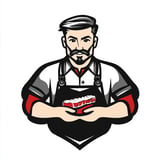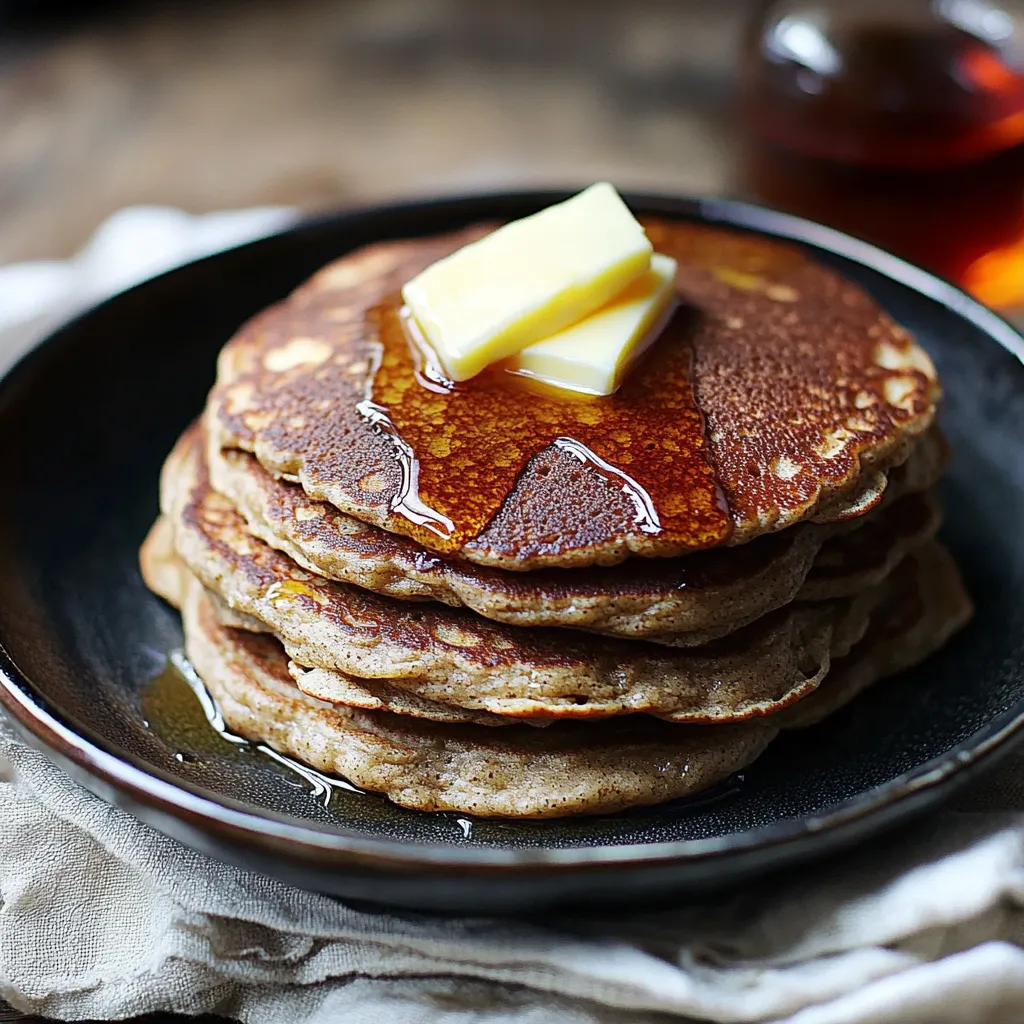 Pin it
Pin it
Buckwheat pancakes bring a special kind of comfort - that rich, nutty taste that takes you back to easier days when breakfast wasn't rushed. After many weekend mornings flipping pancakes, I've found that great buckwheat pancakes aren't just about what goes in them, but knowing how to bring out the best from this traditional grain.
I whipped these up for some friends staying over last weekend who'd never tried buckwheat before. Their doubtful looks changed to happy smiles after one bite. What made the difference? Taking your time with each part and knowing how everything works together.
Key Ingredients and Shopping Advice
- Buckwheat Flour: Go for something that smells fresh. Stone-ground options taste way better.
- Buttermilk: Get the full-fat kind - it's not just about flavor but also helps with texture.
- Butter: Melt it first but let it cool a bit so it mixes in smoothly without cooking your egg.
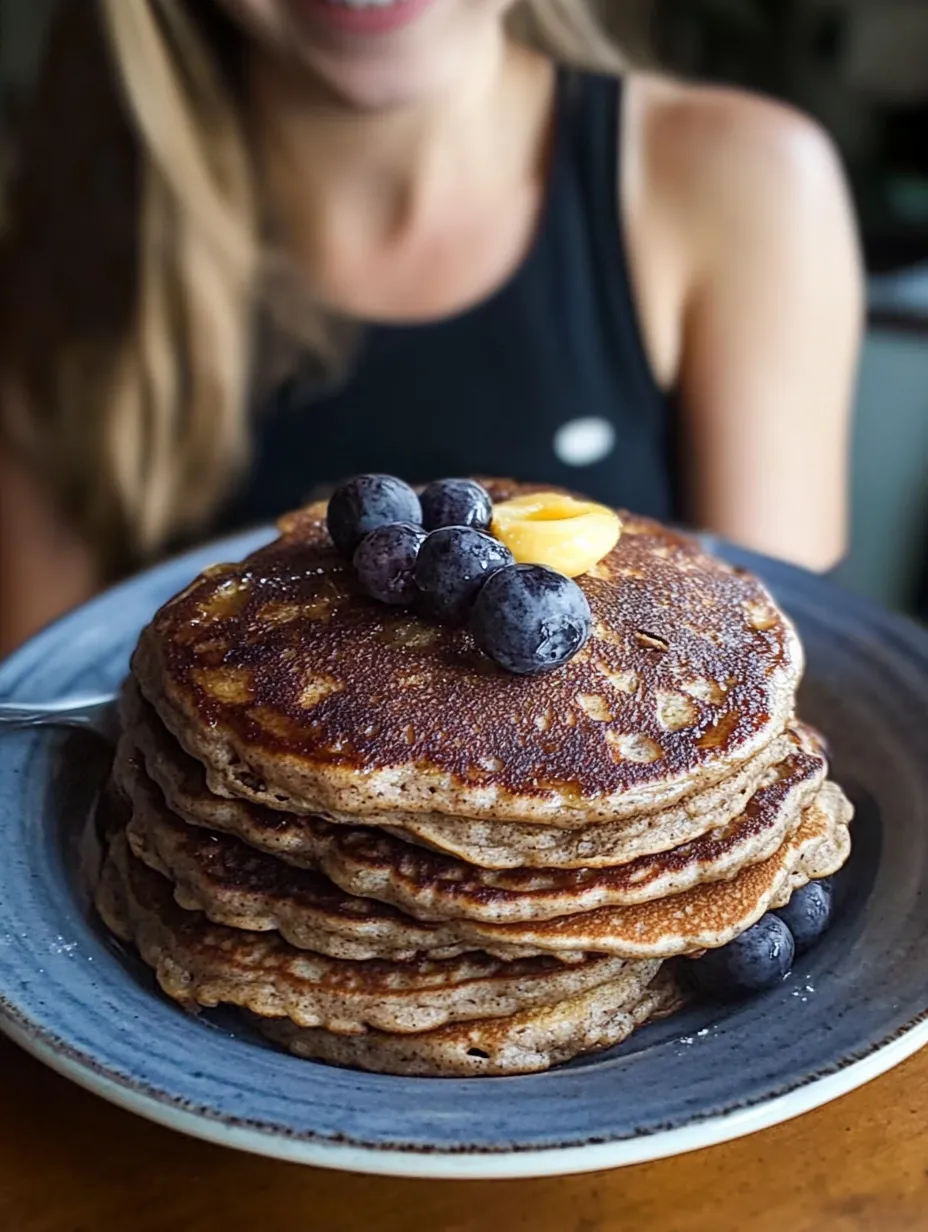 Pin it
Pin it
Making Perfect Pancakes
- Get your pan ready:
- Put your skillet on medium heat - don't rush this part, it needs time to warm up right.
- Blend dry stuff:
- Stir buckwheat and regular flours with sugar, salt, and baking soda until mixed well. Make a hole in the middle to help mix everything better later.
- Mix wet stuff:
- Beat your egg until it's bubbly, then stir in half the buttermilk and your melted butter. Add more buttermilk bit by bit until it looks right.
- Put it all together:
- Pour your wet mix into the hole in your dry ingredients. Fold it all together gently, leaving some small bumps for softer pancakes.
- Let it sit:
- Give your batter 5 minutes to rest while your pan finishes heating up.
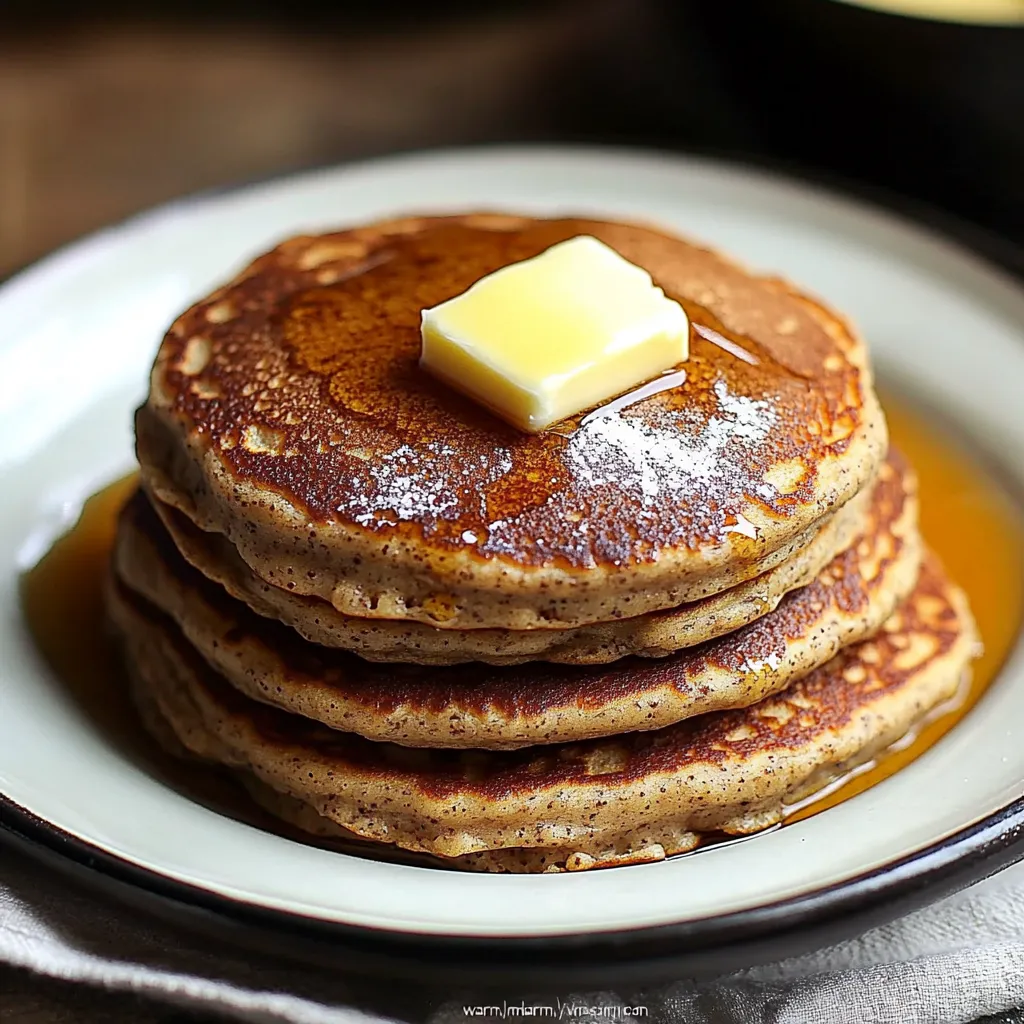 Pin it
Pin it
Smart Flipping Technique
Keep an eye on your pancakes while they cook. You'll see little bubbles form and pop, leaving tiny holes. The edges will look slightly dry. That's when it's time to flip. Use a skinny, bendy spatula and flip with confidence.
Controlling Your Heat
Keeping the right heat matters through the whole cooking time. After you've made a few pancakes, your pan might get too hot - feel free to turn it down or even lift it off the heat for a second. If you see smoke, wipe the pan with a paper towel and let it cool a bit before making more.
Your Own Pancake Routine
Weekend pancakes have become a special tradition in my house. I've started warming the oven on its lowest setting with a wire rack inside. As I finish each pancake, it goes right on the rack, staying warm and crisp while I cook the rest. This works so much better than stacking them up, which makes them all mushy.
Tasty Topping Ideas
- Basic: Pure maple syrup
- Light: Mixed berries with whipped cream
- Cozy: Cooked apples with cinnamon
- Crunchy: Honey drizzled with chopped nuts
Historical Background
Buckwheat pancakes have deep roots in American farming history. They were common in places where tough buckwheat plants grew well, connecting us to our farming past. Whenever I make these pancakes, I think about all the cooks before me who watched for those same bubbles, waiting for just the right moment to flip.
Season-by-Season Changes
- Fall: Mix in some cinnamon and nutmeg, top with cooked apples and toasted pecans.
- Summer: Push fresh berries into the cooking batter.
- Winter: Add some orange peel and pour dark honey over top.
- Spring: Mix in fresh mint and lemon for lighter flavors.
Tools That Make A Difference
The pan you pick really matters. A well-used cast iron pan becomes your best friend for pancakes. It heats evenly and gets naturally non-stick over time. If you're using a non-stick pan, get one with a heavy bottom so it won't heat unevenly. Keep a thin, flexible spatula handy - it gets under pancakes much better than thick ones.
Prep-Ahead Tips
- Mix your dry stuff the night before and cover it well.
- Measure wet ingredients and keep them in the fridge separately.
- Make sure your pan is clean and ready to go.
- Get your plates and toppings set out ahead of time.
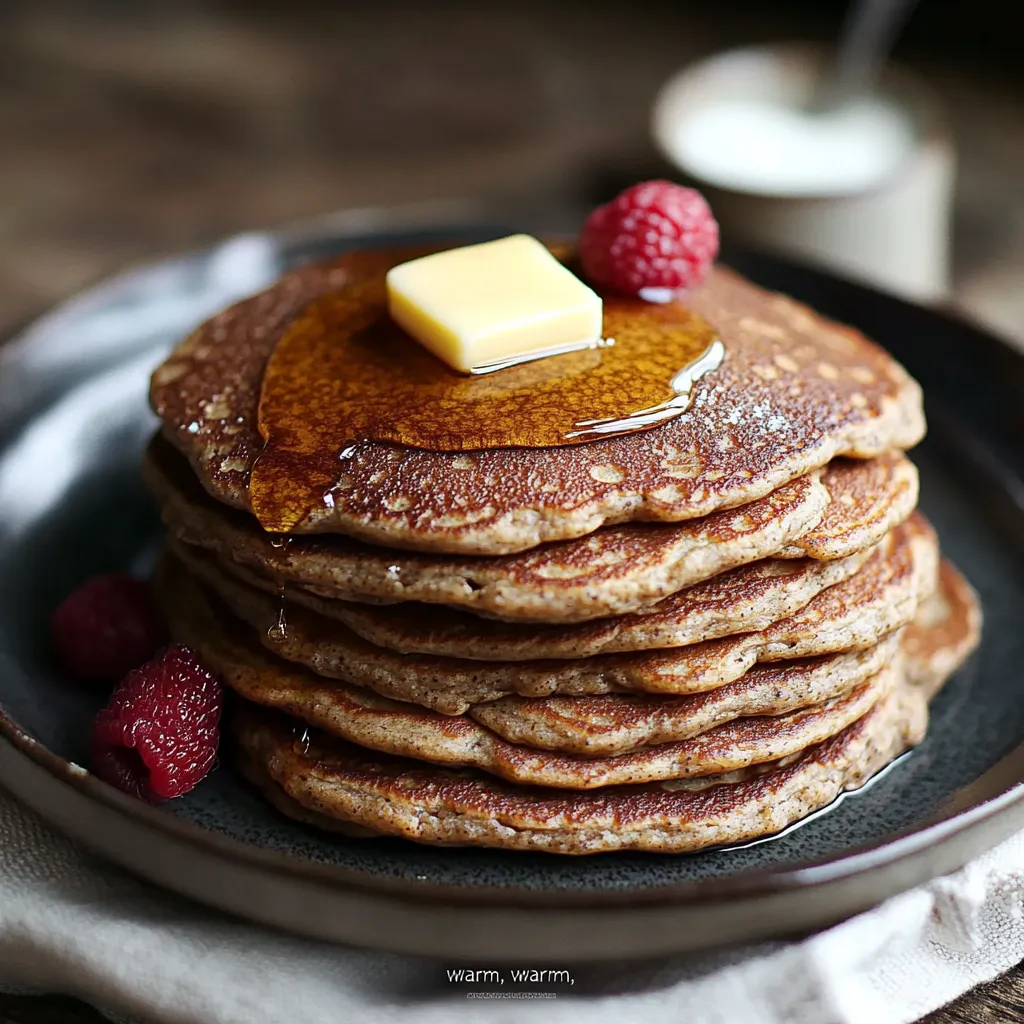 Pin it
Pin it
Saving and Warming Up Leftovers
- Let them cool completely on wire racks first.
- Stack them with parchment paper between each one.
- Keep them in a sealed container in the fridge for up to three days.
- Warm them up quickly in a toaster or in a pan.
Final Thoughts and Reflections
Making awesome buckwheat pancakes means understanding how ingredients, heat, and timing work together. Through tons of Sunday mornings, I've learned that pancakes tell you when they're ready - you just need to watch for the signs.
The best thing about buckwheat pancakes isn't just how they taste but how they connect us to old cooking traditions while fitting into our busy lives. Whether you're enjoying them during a lazy weekend brunch or warming them up for a quick breakfast before work, they remind us that food made with care feeds both our bodies and our spirits.
Frequently Asked Questions
- → How do I make these gluten-free?
- Just swap the regular flour with all buckwheat or a gluten-free blend.
- → Are eggs necessary for this recipe?
- No, it's totally fine to skip them. They turn out great either way.
- → What’s a quick way to make buttermilk?
- Stir 2 tablespoons of vinegar into 2 cups of milk, then let it sit for 5 minutes.
- → Why do my pancakes seem heavy?
- Don’t overmix the batter—having some lumps is okay! Also, check if your baking soda is fresh.
- → Can I save these for later?
- Yep, let them cool first, layer with parchment paper, and freeze. They reheat well in the toaster or microwave.
